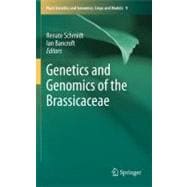
| Phylogeny, Genome, and Karyotype Evolution of Crucifers (Brassicaceae) | p. 1 |
| Brassicaceae in Agriculture | p. 33 |
| The Non-coding Landscape of the Genome of Arabidopsis thaliana | p. 67 |
| Natural Variation in Arabidopsis thaliana | p. 123 |
| Chasing Ghosts: Comparative Mapping in the Brassicaceae | p. 153 |
| Comparative Genome Analysis at the Sequence Level in the Brassicaceae | p. 171 |
| Structural and Functional Evolution of Resynthesized Polyploids | p. 195 |
| Genetics of Brassica rapa L. | p. 215 |
| The Genetics of Brassica oleracea | p. 261 |
| The Genetics of Brassica napus | p. 291 |
| Genetics of Brassica juncea | p. 323 |
| Arabidopsis lyrata Genetics | p. 347 |
| The Genetics of Capsella | p. 373 |
| Self-Incompatibility in the Brassicaceae | p. 389 |
| Sequencing the Gene Space of Brassica rapa | p. 413 |
| Germplasm and Molecular Resources | p. 437 |
| Resources for Metabolomics | p. 469 |
| Transformation Technology in the Brassicaceae | p. 505 |
| Resources for Reverse Genetics Approaches in Arabidopsis thaliana | p. 527 |
| Resources for Reverse Genetics Approaches in Brassica Species | p. 561 |
| Bioinformatics Resources for Arabidopsis thaliana | p. 585 |
| Bioinformatics Resources for the Brassica Species | p. 597 |
| Perspectives on Genetics and Genomics of the Brassicaceae | p. 617 |
| Index | p. 633 |
| Table of Contents provided by Ingram. All Rights Reserved. |
The New copy of this book will include any supplemental materials advertised. Please check the title of the book to determine if it should include any access cards, study guides, lab manuals, CDs, etc.
The Used, Rental and eBook copies of this book are not guaranteed to include any supplemental materials. Typically, only the book itself is included. This is true even if the title states it includes any access cards, study guides, lab manuals, CDs, etc.